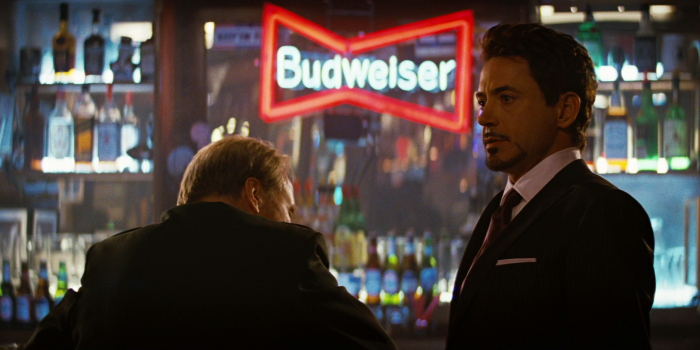Cast: Monique van de Ven, Rutger Hauer, Andrea Domburg
Director: Paul Verhoeven
Country: Netherlands
Genre: Drama | Romance
Editor’s Notes: The following review is part of our coverage for TIFF’s Flesh + Blood: The Films of Paul Verhoeven which runs from January 24th to April 4th at TIFF Bell Lightbox. For more information on upcoming TIFF film series visit http://tiff.net and follow TIFF on Twitter at @TIFF_NET.
Katie Tippel is one of Paul Verhoeven’s early Dutch films that is rarely seen nowadays. The only copy I was able to find was streaming on Amazon and was a poorly dubbed, pan and scan digitized VHS print. Maybe it was the quality of the print, I don’t know, but the film just didn’t have a sense of pacing nor did it have a fleshed out enough story for its runtime.
The story is that of Katie Tippel (Monique van de Ven), a poor girl who immigrates to Amsterdam with her family in 1881. The family’s circumstances are dire and although the father has a job, the eldest daughter goes into prostitution to provide income for the family. Katie meanwhile goes from job to job, not being able to hold anything down because of her pride and an inherently combative attitude, also an unwillingness to submit to the lecherous advances of bosses.
The whole film is one tragedy after another with Katie being intermittently happy. The look into poverty is striking and gritty, but the scenarios get to be overbearing.
Her attitude changes when she is raped by a boss, and then willingly submits to her mother’s insistence to become a prostitute (after her sister was kicked out of the brothel). On her first (and only) night of selling herself, she encounters George (Peter Faber) who is an artist more interested in painting her than sleeping with her. He pays her well to model for him and while she does, she meets Hugo (Rutger Hauer) and Andre (Eddie Brugman). The four go to dinner where both Hugo and Andre set their sights on Katie. She takes up with Hugo, a low level bank employee with little money, but is turned out when he decides to marry money (the boss’ daughter).
The whole film is one tragedy after another with Katie being intermittently happy. The look into poverty is striking and gritty, but the scenarios get to be overbearing. Add to that Verhoeven trying to make this a skin flick (which caused the film to originally be rated X, possibly because of the rape scene exclusively, because the nudity is fairly pedestrian) makes the tone and situations very uneven. Katie sleeps her way into society for the gutter, but everything feels so unnatural and coincidental.
 The film is based on the Nobel Prize winning autobiography of Keeje Tippel, written under the pseudonym Neel Doff, which I can only presume is much less formulaic than the film version of her story. Verhoeven tries to make an authentic period piece that shows the grit and dirt of the time period, much like Tom Jones (1963) and while the set design and costuming is top notch and does recreate a more realistic version of the late 19th century than was often seen up to that point, Verhoeven populated his film with actors whose interpretations of their roles are so broad that it’s tough to feel any real emotion for them.
The film is based on the Nobel Prize winning autobiography of Keeje Tippel, written under the pseudonym Neel Doff, which I can only presume is much less formulaic than the film version of her story. Verhoeven tries to make an authentic period piece that shows the grit and dirt of the time period, much like Tom Jones (1963) and while the set design and costuming is top notch and does recreate a more realistic version of the late 19th century than was often seen up to that point, Verhoeven populated his film with actors whose interpretations of their roles are so broad that it’s tough to feel any real emotion for them.
The most disappointing part of the film is the last 12 minutes. Verhoeven puts Katie in the heart of a worker’s protest that ends in police initiated bloodshed and resolves the film very hurriedly and unbelievably. I have read that the producer took the film away from Verhoeven and recut the ending, but the only way anything in the last 12 minutes could have made sense is if it was cut down from 30 minutes. While I’m certainly not in the habit of recommending additional length to a film I was frequently bored with, but an additional 15-17 minutes would have at least let the ending come organically and not just rush toward the finish line with a time marker in mind. The march is most akin to the draft riots in Martin Scorsese’s Gangs of New York (2002). While referenced and glimpsed throughout the film, the inclusion at the end is equally quizzical and abrupt.
Verhoeven has never impressed me with his ability to direct actors and seeing one of his early films leaves my opinion unchanged. The best performance comes, unsurprisingly, from Rutger Hauer. He’s the most natural of the entire cast (even though I don’t think it was his voice used in the dub). Van der Ven spends most of her turmoil with a glib grin on her face, as if she’s mostly unfazed by what has happened to her throughout her time in Amsterdam and before. That can, and often is, interpreted as naiveté and that may have been what van der Ven was going for, but to me it just came off as Verhoeven telling us this is all a joke, which undermines the entire film.
It’s difficult to determine Verhoeven’s ultimate intent with this film. It feels like a cross between Emil Zola’s novel Nana and George Bernard Shaw’s Pygmalion. The nude scenes are anything but titillating, the sex scenes are not erotic and the sequences in between are overlong and boring. The addition of Katie’s family being some of the worst people ever doesn’t help the general likability of the film.
If Katie Tippel is to be admired for anything it is the set design/decoration that I mentioned. That team did a lot to recreate late 19th century Amsterdam in a believable way. Everything about it is well conceived and shows the dichotomy of the poor and rich ways of life, even if the actors and the staging do not.
If Katie Tippel is to be admired for anything it is the set design/decoration that I mentioned. That team did a lot to recreate late 19th century Amsterdam in a believable way. Everything about it is well conceived and shows the dichotomy of the poor and rich ways of life, even if the actors and the staging do not. I’m sure on a good print, Jan de Bont’s cinematography is rich and only serves to punch up the period detail of the sets and costumes, but on the one I saw the colors were faded and the darks were murky and difficult to see anything through. I blame it on the print because as I said above, I think what I saw was a digitized version of a bad VHS copy where nothing looked good at all.
The film is decent, and despite its problems manages to engage for at least half of the runtime. It was difficult for me, as it usually is, to get into a dubbed version of a non-English language film and that was likely the biggest obstacle aside from the muted color palate and pan and scan print. I may have responded better to a sharper print in the original Dutch, but what is glaring is the tediously long scenes that don’t achieve much. It’s not a bad film, but it’s nothing special either.
[notification type=”star”]65/100 ~ OKAY. The film is decent, and despite its problems manages to engage for at least half of the runtime.[/notification]



